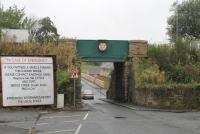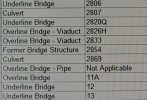This might sound a simple question, but when is a bridge counted as a bridge?
Looking at the old OS maps from 1910 I have been trying to count the number of bridges along my old branch line. Now I know certain bridge numbers. Take one of them (bridge No 17), as I go along the route there are obvious ones such as over a brook or an occupation bridge, but there are others on the maps which look like (for instance) cattle creeps. Depending on which of these little bridges I count, I sometimes get to bridge 17 as 17, sometimes its number is greater, sometimes less.
Questions:
What really constitutes a bridge?
Did bridge numbers change? If you add an extra bridge would you really have renumbered the rest of them? or said the new bridge is 10A and the original bridge 10 as 10B?
If you have a 50 foot embankment with access through it at the base (in this case an old tramroad) would that count as a bridge?
Would you count a footbridge at a station linking two platforms?
At first glance it sounds a simple question, on opening the line had 39 bridges, by say 1910 I can easily count over 50. I know surroundings change over time.
Would love your thoughts on the subject.
Thanks.
Looking at the old OS maps from 1910 I have been trying to count the number of bridges along my old branch line. Now I know certain bridge numbers. Take one of them (bridge No 17), as I go along the route there are obvious ones such as over a brook or an occupation bridge, but there are others on the maps which look like (for instance) cattle creeps. Depending on which of these little bridges I count, I sometimes get to bridge 17 as 17, sometimes its number is greater, sometimes less.
Questions:
What really constitutes a bridge?
Did bridge numbers change? If you add an extra bridge would you really have renumbered the rest of them? or said the new bridge is 10A and the original bridge 10 as 10B?
If you have a 50 foot embankment with access through it at the base (in this case an old tramroad) would that count as a bridge?
Would you count a footbridge at a station linking two platforms?
At first glance it sounds a simple question, on opening the line had 39 bridges, by say 1910 I can easily count over 50. I know surroundings change over time.
Would love your thoughts on the subject.
Thanks.






